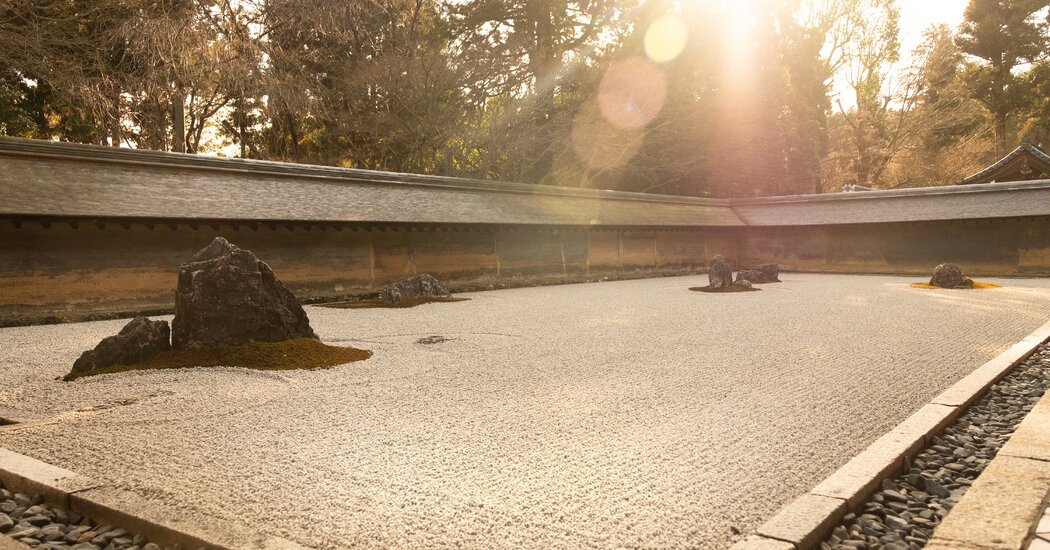
Once, when the Buddha was asked to preach about a flower he was presented, he instead “gazed at it in silence,” according to the British garden designer Sophie Walker in her book “The Japanese Garden.” In this spiritual moment Zen Buddhism was born, inspiring the serene and eternal dry or rock gardens called karesansui.
Unlike a garden designed for strolling, which directs visitors along a defined path to take in scenic views and teahouses, a dry garden is viewed while seated on a veranda above, offering the heightened experience of traveling through it in the imagination, revealing its essence in meditation.
With rocks artfully placed along expanses of fine gravel raked by monks into ripples representing water, they are sources for contemplation, whether they refer to a specific landscape or are serenely abstract. Ryoan-ji, which dates to about 1500, is the supreme example of the latter among Kyoto temples, with its 15 low rocks in five clusters set in pools of moss within an enclosed rectangle of raked gravel. The puzzle is that only 14 are visible at any one time, no matter where you sit to view it.
Change in Kyoto, Japan’s major city of temple gardens, is a quiet evolution. But a tour of several dry gardens designed within the last century — and even within the last few years — demonstrates that the Zen tradition is timeless when it comes to landscape design, and that moments of contemplation are still possible, even as the crowds grow bigger.





